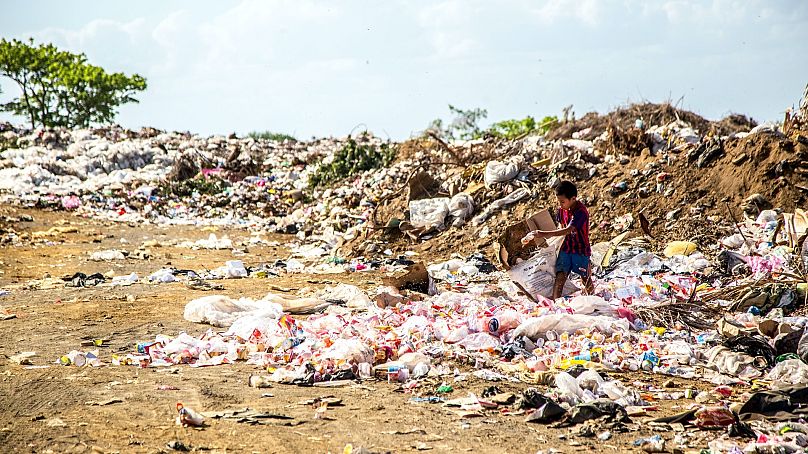Report on the Global Waste Index 2025
Introduction: Waste Management and Sustainable Development
A recent report, the Global Waste Index 2025, published by Sensoneo, provides a comparative analysis of waste management practices across the 38 member states of the Organisation for Economic Co-operation and Development (OECD). This analysis is critical for evaluating progress towards several key United Nations Sustainable Development Goals (SDGs), particularly those concerning urban sustainability, responsible consumption, and environmental protection.
Key Findings and Relevance to SDG Targets
The index offers crucial data points that align directly with the 2030 Agenda for Sustainable Development. The primary findings concern waste generation levels, identification of leading polluters, and the effectiveness of specific waste management strategies.
Analysis of Waste Generation and Leading Polluters
The report identifies the countries with the highest rates of waste generation per capita, providing a clear metric for assessing national performance against global sustainability benchmarks.
- SDG 11 (Sustainable Cities and Communities): The data directly informs Target 11.6, which aims to reduce the adverse per capita environmental impact of cities, with a special focus on municipal waste management. Identifying the largest polluters is the first step toward targeted policy intervention.
- SDG 12 (Responsible Consumption and Production): The findings highlight consumption and production patterns that are unsustainable. This is central to Target 12.5, which calls for a substantial reduction in waste generation through prevention, reduction, recycling, and reuse by 2030.
Trends in Waste Production and Management
The index evaluates overarching trends in waste production, offering insights into whether OECD nations are successfully decoupling economic growth from resource use and waste generation.
- Monitoring Progress: Tracking these trends allows for a quantitative assessment of efforts to achieve a circular economy, a core principle of SDG 12.
- Policy Evaluation: The data serves as a foundation for evaluating the effectiveness of national and international policies aimed at waste reduction and sustainable resource management.
Impact Assessment of Deposit Return Schemes (DRS)
A significant portion of the report is dedicated to the impact of Deposit Return Schemes (DRS) on recycling rates and overall waste management efficiency.
- Promoting Circularity (SDG 12): DRS are shown to be an effective tool for increasing the collection and recycling of beverage containers, directly contributing to Target 12.5 by promoting reuse and recycling.
- Protecting Ecosystems (SDG 14 & 15): By improving collection rates for plastics and other materials, effective DRS helps prevent waste leakage into marine and terrestrial ecosystems, supporting SDG 14 (Life Below Water) and SDG 15 (Life on Land).
Analysis of the Article in Relation to Sustainable Development Goals (SDGs)
1. Which SDGs are addressed or connected to the issues highlighted in the article?
Based on the article’s focus on waste management, the following Sustainable Development Goals (SDGs) are addressed:
-
SDG 11: Sustainable Cities and Communities
The article discusses a “Global Waste Index” that compares “waste management” across 38 OECD countries. Effective waste management is a critical component of urban infrastructure and environmental sustainability in cities and human settlements.
-
SDG 12: Responsible Consumption and Production
The article directly relates to this goal by mentioning “waste production trends,” identifying the “biggest global waste polluters,” and referencing “DRS schemes” (Deposit Return Schemes). These topics are central to achieving sustainable patterns of consumption and production by managing waste generation and promoting recycling.
2. What specific targets under those SDGs can be identified based on the article’s content?
The article’s content points to the following specific SDG targets:
-
Target 11.6: By 2030, reduce the adverse per capita environmental impact of cities, including by paying special attention to air quality and municipal and other waste management.
The article’s core subject, a “Global Waste Index” comparing national “waste management,” directly aligns with the objective of managing municipal and other waste to reduce the environmental impact of urban areas.
-
Target 12.4: By 2020, achieve the environmentally sound management of chemicals and all wastes throughout their life cycle, in accordance with agreed international frameworks, and significantly reduce their release to air, water and soil in order to minimize their adverse impacts on human health and the environment.
The comparison of “waste management” systems and the identification of “biggest global waste polluters” are directly related to achieving the environmentally sound management of waste.
-
Target 12.5: By 2030, substantially reduce waste generation through prevention, reduction, recycling and reuse.
The mention of “waste production trends” and the “impact of DRS schemes” (which are designed to increase recycling and reuse) directly corresponds to this target of reducing overall waste generation.
3. Are there any indicators mentioned or implied in the article that can be used to measure progress towards the identified targets?
Yes, the article implies several indicators through its description of the “Global Waste Index 2025.” While not explicitly named, the following indicators are necessary components of such an index:
- Amount of waste generated: Implied by the phrase “waste production trends” and the identification of “biggest global waste polluters.” This would likely be measured in total tons or per capita. This relates to measuring progress for Target 12.5.
- Recycling and recovery rates: Implied by the mention of “DRS schemes.” The effectiveness of such schemes is measured by the rate at which materials are returned for recycling, which is a key part of Indicator 12.5.1 (National recycling rate, tons of material recycled).
- Waste management efficiency: The creation of a “Global Waste Index” that compares countries implies the use of indicators to measure the overall effectiveness of waste management systems, which is central to Target 11.6 and its indicator 11.6.1 (Proportion of municipal solid waste collected and managed in controlled facilities).
4. Table of Identified SDGs, Targets, and Indicators
| SDGs | Targets | Indicators (Implied from the article) |
|---|---|---|
| SDG 11: Sustainable Cities and Communities | 11.6: Reduce the adverse per capita environmental impact of cities, including by paying special attention to… municipal and other waste management. | Metrics on the efficiency of national waste management systems (as would be included in a “Global Waste Index”). |
| SDG 12: Responsible Consumption and Production | 12.4: Achieve the environmentally sound management of… all wastes throughout their life cycle. | Ranking of countries as “biggest global waste polluters,” which implies a measure of improperly managed waste. |
| 12.5: Substantially reduce waste generation through prevention, reduction, recycling and reuse. | Data on “waste production trends” (e.g., waste generated per capita) and recycling rates influenced by “DRS schemes.” |
Source: packagingeurope.com







